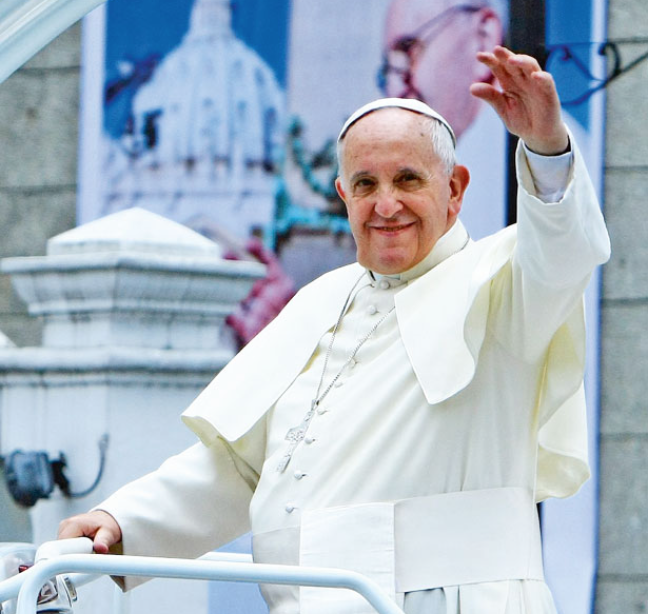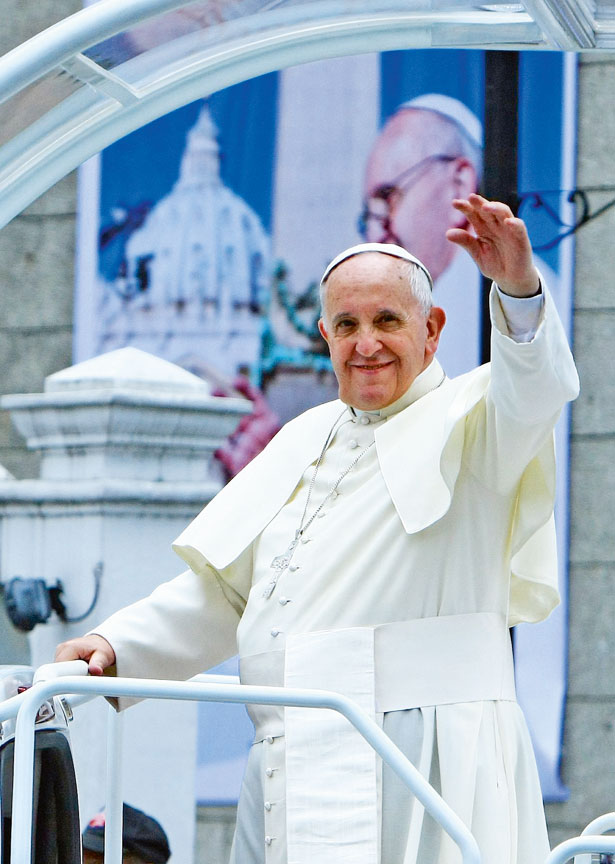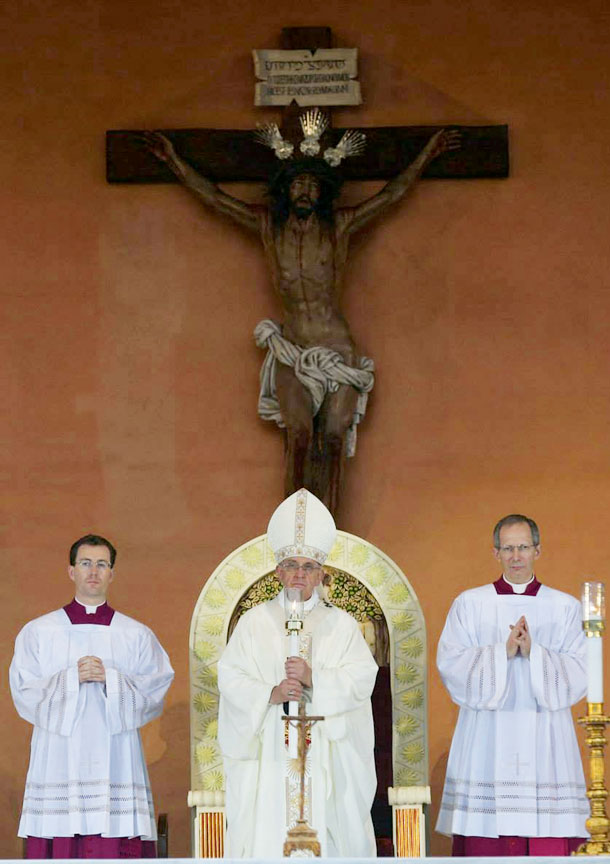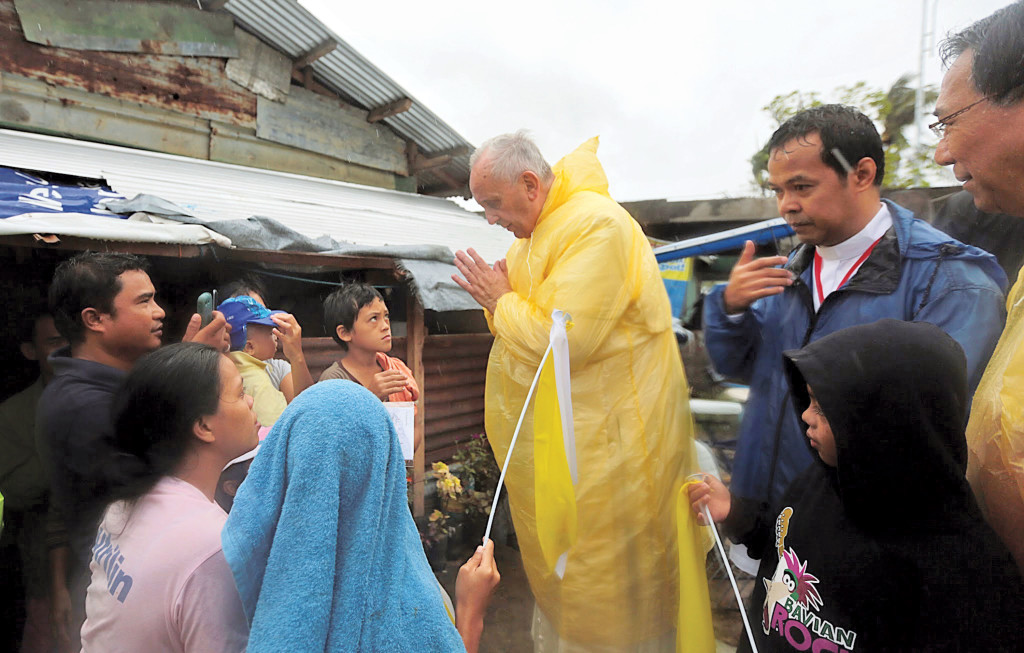By JOAQUIN CARLOS U. DE JESUS
It has been years since the head of the Roman Catholic Church was a rock star in both the spiritual and secular spheres. Mired for years in scandals of corruption, sex abuse and inflexibility, the Catholic Church—globally—is currently enjoying a seeming rebirth of popularity thanks to its charismatic head, Pope Francis.
PeopleAsia takes you on a walkthrough of Pope Francis’ papal journey and reveals the man behind the cassock through his most captivating words and points of reflection.
On a chilly, damp March evening, with thousands gathered at the Vatican waiting for the holy smoke to rise, the Cardinal Protodeacon Jean-Louis Tauran announced to the world that the new Pope was Argentina’s Cardinal Jorge Mario Bergoglio who took the name of Francis. Which Francis? Francis of Assisi or Francis Xavier, Patron of the Missions and Ignatius of Loyola’s first apostle? Three days after his election, Francis explained to a gathering of journalists who covered the Conclave why he chose Francis. He said that St. Francis was, “the man of poverty, the man of peace, the man who loves and protects creation…with whom we don’t have such a good relationship.â€
Jorge Mario Bergoglio was elected as the Supreme Pontiff of the Roman Catholic Church on March 13, 2013, on the second day of conclave, when, on the fifth ballot, he was given over 90 votes, well more than the 77 votes required. His election was a milestone in many aspects. He is the first non-European pope in 1,272 years, and the first pontiff from the New World. He is also distinctively the first Jesuit to become Pope. This comes as a surprise as Jesuits, being members of the Society of Jesus, are traditionally considered as the intellectual and elite men’s religious order in the Church, and are known to be more concerned with “reforming individuals†rather than Church hierarchy.
It was in July 1973, the Feast of San Ignacio de Loyola, founder of the Society of Jesus, that Bergoglio was given the heavy and delicate responsibility of leading the Society of Jesus in Argentina as Provincial. At the relatively young age of 36, and only on his third year in the priesthood, he was responsible for leading a highly influential religious order in a country entering a dark and turbulent chapter in its history. In the personal interview given by Pope Francis to Rev. Antonio Spadaro, SJ in August 2013, published by La Civiltà Cattolica, Francis admitted with self-effacing honesty that his style of government as a young Jesuit “had many faults.â€
“That was a difficult time for the Society: an entire generation of Jesuits had disappeared. Because of this I found myself Provincial when I was still very young. I was only 36 years old. That was crazy. I had to deal with difficult situations, and I made my decisions abruptly and by myself,†he told Spadaro, SJ.
In 1979, Bergoglio’s tumultuous term as Provincial ended and as some commentators would claim, he was practically banished to Córdoba where he “lived a time of great interior crisis,†as he revealed in his interview with Spadaro. But Divine Providence truly has its ways of choosing the lowly. During his time in Córdoba, Cardinal Antonio Quarracino, Archbishop of Buenos Aires, sought him out to be his close collaborator because the latter was impressed with the former’s leadership as the Jesuit’s Provincial. From 1992 onwards, Bergoglio quickly ascended the Argentinian episcopal hierarchy, starting off as Quarracino’s auxiliary bishop of Buenos Aires. Bergoglio chose as his episcopal motto, “Miserando atque eligendo,†meaning “lowly but chosen.â€
In the Consistory of 2001, Pope St. John Paul II made him a Cardinal in a ceremony at St. Peter’s Square. But even before becoming a Prince of the Church, Bergoglio had already developed a reputation among Argentinians for his austere lifestyle and frugality. Refusing to live in the Archbishop’s Palace, Bergoglio lived in a simple apartment and cooked his own meals. To get around the city, Bergoglio took public transport and spent countless hours with the poor in Buenos Aires’ slums. Even before delivering his widely received first Chrism Mass sermon as Pope, he was already living what he said in that Mass. In the said Mass where the holy oils for Baptism, Confirmation, Ordination and Unction are blessed, he said that priests and pastors must be “shepherds living with the smell of the sheep.â€
From the moment Francis came out of St. Peter’s central loggia, donning the simple white Papal cassock and not the traditional red mozzetta (which is actually a symbol for martyrdom, and not a display of lavishness), he has taken the world by storm.
What makes the Franciscan agenda so appealing to both believers and non-believers? At the onset, Francis has been making statements and moving gestures that suggest his Papacy’s commitment to reforming the Church, re-evaluating pastoral approaches, and, at a more controversial level, changing the Church’s tone on hot-button issues.
In his first Apostolic Exhortation, “Evangelii Gaudium†or “The Joy of the Gospel,†Francis emphasized the need for Church to go beyond itself, to not be caught up within her own rules, and to always be ready to go forth. “I prefer a Church which is bruised, hurting and dirty because it has been out on the streets, rather than a Church which is unhealthy from being confined and from clinging to its own security. I do not want a Church concerned with being at the center, which then ends by being caught up in a web of obsessions and procedures,†he said in “Evangelii Gaudium,†which more or less lays down his blueprint for his papacy.
In his famous interview with Spadaro, SJ, he also went on to compare the Church as a “field hospital†saying, “The thing the Church needs most today is the ability to heal wounds and to warm the hearts of the faithful; it needs nearness, proximity. I see the church as a field hospital after battle. It is useless to ask a seriously injured person if he has high cholesterol and about the level of his blood sugars! You have to heal his wounds. Then we can talk about everything else. Heal the wounds, heal the wounds. … And you have to start from the ground up.â€
He is hoping and making it possible for the Church to reach out, to extend her arms wide open to the poor and the marginalized, and not be choked by its perennial tendency to be self-referring. In “Evangelii Gadium,†the Pope himself says it more eloquently: “More than by fear of going astray, my hope is that we will be moved by the fear of remaining shut up within structures which give us a false sense of security, within rules which make us harsh judges, within habits which make us feel safe, while at our door people are starving and Jesus does not tire of saying to us: ‘Give them something to eat’ (Mark 6:37).â€
Indeed, one year after his inauguration as the Successor of Peter, Francis is fulfilling his duty to be “the great bridge makerâ€â€”the Pontifex Maximus—one who can bridge the wide gap between the Church’s conservative and liberal wings, as well as the Church and the world.
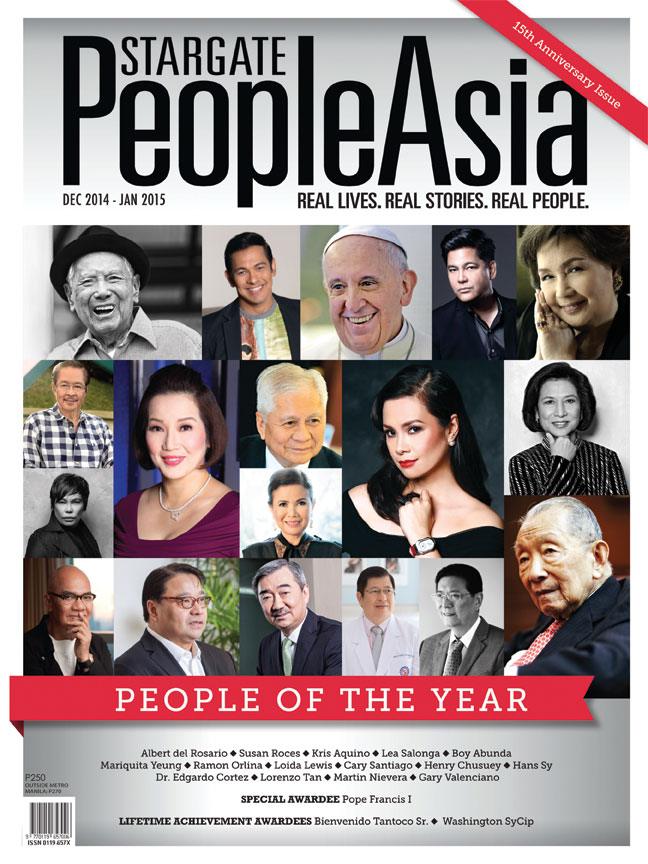
Editor’s note: The original article featuring these excerpts was first published in PeopleAsia’s special issue on the Pope released in February 2015.Â

